MacedoniaThe Cookbook Recipes and Stories from the Balkans
Discover the flavors and traditions of Northern Macedonia
The cuisine of Northern Macedonia is a rich mosaic of influences from the Mediterranean and Middle East, and the neighboring countries of the Balkan Peninsula. Known for its opulent family meals, the regional dishes play important symbolic roles in local traditions and family celebrations.
Macedonia: The Cookbook is a love letter to Macedonian culture, and a cuisine deeply rooted in its land and traditions. Through over 100 mouthwatering recipes for mezze dishes, salads, soups, fish, poultry, meat, vegetables, and delicious sweets and preserves, chef and food writer Katerina Nitsou shares the authentic flavors and wisdom brought along with her family from the mountainous villages of Northern Macedonia, recreated and adapted in her North American kitchen.
Coupled with beautiful photography of the food, people, and landscapes of Northern Macedonia, this cookbook captures the country’s essence and belongs on the kitchen shelf of every foodie.
Katerina Nitsou spent her childhood in the kitchen helping her grandmother, mother, and aunts prepare meals using fresh herbs and vegetables from the family’s prized garden. Growing up in a large Macedonian-Canadian community in Toronto, she was immersed in the Macedonian culture through language, dance, and celebrations. She began writing about traditional Macedonian cuisine long before she completed her training at the prestigious Le Cordon Bleu College of Culinary Arts. She honed her recipe writing skills in the Los Angeles Times Test Kitchen and developed her cooking style working as a food stylist, caterer, and private chef in California. She currently lives in Melbourne, Australia with her husband and two young children, whom she is teaching to cook.
Katerina Nitsou
~~~~~~~
A case of home sickness caused by a move from Toronto to Los Angeles inspired Katerina Nitsou to seek out a connection to her family. Coming from a large family of Maecedonian heritage Katrerina revisited family recipes. The result is a strengthened connection to her past and a beautiful new book on an often overlooked cuisine.
Katerina Nitsou, now living in Australia, recently took time to talk with us about her new book and a little about the country of the heritage.
Bookaboutfood.com(BAF): I’m going to be totally honest. Prior to doing a little research on your book, Macedonia, I think is a country that’s a little unknown to a lot of people. If you wouldn’t mind just any way you could give an overview brief as it may be about the country.
Katerina Nitsou: Macedonia is… It’s a pretty ancient culture and people. It dates back to before Alexander the Great. Over the course, particularly of the last century, there’s been a lot of changes politically surrounding the geographic border of Macedonia, and it’s a really fascinating place; but it’s sort of got independence in ’92, after World War I, it was separated and divided. But the people, like Macedonian people, have been residing in the area for centuries.
So, it’s just sort of changed. And similar to a lot of places around, I mean, everywhere in the world really, but similar to that area. There was the Ottoman Empire and the Byzantine Empire. There’s sort of all this fluctuation of borders and different conflicts and stuff. But it’s a beautiful part of the world, and it’s very lush in terms of agriculture. It’s on the same latitude of Northern Italy. So if you can imagine the types of foods that and ingredients that grow there, and they’re becoming more globally acclaimed with wine, and it’s just a really beautiful rustic cuisine.
BAF: Well then I’m actually done asking my next question; can you anyway give an overview of the cuisine in general. I know it’s a big picture but the paint-
Katerina Nitsou: The food is very unassuming. It’s not particularly complicated. Macedonia is a very agricultural landscape. And I’d say beans and peppers, and tomatoes and livestock, freshwater fish; Macedonia is not on the sea, so it’s fish comes from a lot of the lakes and rivers that exists in Macedonia. A lot of freshwater fish which is beautiful. It’s just a very rustic, sort of simplistic type of cuisine.
There’s a lot of stews and braises, and there’s a lot of pride that circles around the baked goods, breads, and savory pastries and sweets, and those types of things. There’s some cultural influences from the bordering countries of Turkey, and Greece, and the Orient, and even up north and east into the Balkan Peninsula and Eastern Europe. There’s a lot of overlay in terms of ingredients, and recipes, and that sort of thing. But, it’s a really lovely cuisine because anyone, you don’t have to be a classically trained chef to execute it really well. So it’s very easy to navigate and a lot of the ingredients are easy to find.
BAF: Well, you’ve provided a very handy map (in the book). It really gives you an idea of just where it is.
Katerina Nitsou: Where it is. Yeah.
BAF: So, you were, you grew up in a Macedonian household involved in the community.
Katerina Nitsou: Yep.
BAF: Was cooking something you always did as a kid, or at least this particular cuisine? I guess that’s what you would work with?
Katerina Nitsou: Well, it was certainly the cuisine that we ate most at home. A lot of the recipes were the childhood favorites that we’d have on weeknight dinners and family gatherings on the weekends and stuff like that. I mean, my parents certainly tried to introduce other ethnicities and stuff like that, but we typically ate Macedonian food growing up, and cooking was certainly a big joy of mine from a young age. My mom hosted a lot, and it wasn’t uncommon on the weekends for us to have 20 or 30 people coming over for a meal on the Sunday afternoon and-
BAF: Is that all?
Katerina Nitsou: Well, I have a very big family! Yeah. I mean, it was really a big part of tapestry growing up and then we… I would be helping my mom in the kitchen often, and my dad is a good cook as well. He’s got a few of his staples that he likes to do.
Yeah, I really enjoyed being in the kitchen from a very young age. I think my joy of that just flourished from being around that sort of sense of family and gathering. I think a big part of me when I moved away, because I was 22 when I moved to Los Angeles, and I didn’t have my family around, and there was certainly something I pined over and missed. Although I traveled back and forth quite a bit, I still missed that concept of home. I really took to food at that time sort of as a connection to my upbringing. That’s really a big part of what inspired me to write the book.
BAF: Well, I guess let’s segway to that question. So what was that? Was that just how the book came about? Just out of a sense of homesickness and nostalgia?
Katerina Nitsou: Yeah, I mean it was a little bit of a combination of things actually.
It’s funny that the original thought to write the book, my husband, who did all the photography of the food in the book, he’s a photographer and cinematographer and had a production company in Los Angeles when we lived there, and obviously very handy with a camera. And I just sort of woke up one morning and I said, “Oh, if I write a Macedonian cookbook, would you do the photos for me?” And he said, “Yeah.”
I didn’t… At that time, we didn’t really think about the gravity of what goes into writing a cookbook but we started nonetheless, and he indulged me nonetheless. I think a big reason why I wanted to really push through the many years it took us to write this book was because we… For the similar reason as you mentioned before, you weren’t particularly aware of Macedonian cuisine and Macedonian culture, and I felt almost compelled to create something that could really capture the cuisine, and document the recipes, and show beautiful photography, and present it to the world in a really special way.
And, I think it was a combination of me being homesick, and having a creative project with my husband, and this desire just to capture Macedonian food for… I didn’t realize at that time, I wasn’t published when I started writing it, so I didn’t have the support of a publishing company behind me. I just sort of just started writing it, and documenting it, and putting it all together without the thought that it would ever be published. And at that time I just thought, “Oh, if it’s just something that I leave to my children, or if it’s something that’s just shared internally with our family, it’ll be a great thing just for us,” and then it sort of evolved into a bigger thing, which was very exciting, but I’m very pleased with the outcome.
And I think that some of the feedback from people who have now received the book, particularly people of Macedonian background and descent, a lot of them have reached on it and it’s such a beautiful story when they’re saying, “Oh, these are the recipes that my grandmother used to cook, or my mom used to cook, and they’re not around anymore. We never documented them,” and it’s so special for the Macedonian community to have something that they can carry forward as the generations move on, and also for non Macedonians to learn about this part of the world and the food that comes from this part of the world.
BAF: So you just torpedoed the question I have down the road about photography of the book, because it’s got some beautiful photographs.
Katerina Nitsou: Thank you.
BAF: So are a lot of these recipes, your home recipes? Something you would have made at home, like family recipes?
Katerina Nitsou: Yeah. A lot of them are things that we see. I… These are all my recipes. I wrote and tested every recipe. And obviously, there’s variations in the way that people do it in their own homes. But, a lot of these recipes were ones that I grew up eating. And there were some that I actually had to research, and I knew that they were more traditional, and not things necessarily that my parents made often. But I knew they were in the wheelhouse of traditional Macedonian cuisine. And we did a lot of research.
It took Oliver and I about six to seven years to complete the book. And in that time we wrote… I wrote everything, tested it, wrote it, tested it, and made adjustments in it. And it was a tricky thing because a lot of my knowledge of the cuisine came from just learning as a child and watching. So, and I’m sure a lot of other ethnicities can connect to this too.
You know, if I would ask my mom or my aunt, “Oh, how did you make this?” “How’d you,”… It’d be the type of thing like, “Oh, a handful of this and a pinch of that,” and having to take that, those sort of visual measurement cues, and documenting it to really be able to allow somebody to execute it in their own kitchen without that background was really important to me.
So, it took a lot. The testing took quite a long time. My husband and I just set up a little studio in our house. We had a beautiful corner window that we set up a little table and got a bunch of props, and beautiful plates, and backgrounds, and sort of that type of thing. And then we started to just make the dishes and photograph each one, and document, and on we went. So we just sort of chipped away at that process until the book was completed.
BAF: Were you able to call a family members if you needed help or got stuck or…
Katerina Nitsou:Yeah sometimes. For sure. Yeah. My mom, mainly. My grandmother who I was really close with, my dad’s mom, she actually passed away before I really started to work on the book, but she was a source of inspiration for me and my maternal grandfather, who was a chef as well. He was an amazing, amazing cook. And, he also passed away before I started the book, but my mom and my aunts were certainly big sources for me in terms of referencing sort of things. And sometimes, when I would get stuck on something or it wasn’t turning out right, of course, I go to them and they would sort of guide me through and explain a better way to approach it. But yeah, I was very fortunate to have that authentic insight.
BAF: I guess the other part of that is, would people want to share family recipes with you, family secrets? Was there any…
Katerina Nitsou: Well, my family was very… My family was quite open to it. But, I do know that there’s some people who have their specialties, and that sort of stuff. But I wasn’t really looking to replicate how other people do it. I wanted to just… I think that everyone has a different approach, in doing things and certain people add or subtract certain things based on personal taste.
I really wanted to write the recipes that were the way I liked to have them, and the way I connected to the recipes. And so, I think my inspiration wasn’t necessarily copying what other people… How they did it. It was sort of my true interpretation of how I like it. Because even certain things that I’ve done in the cookbook as well, like as an example, there’s a meatball soup with this… Typically with spinach, and rice, and a lemon and egg broth, and it’s one of my favorite soups.
Traditionally, the meatballs are just sort of dropped in raw into the broth, that has got the broth bubbling, and you drop in the meatballs raw, and which it tastes delicious. It’s, there’s nothing wrong with it, but it’s the meat kind of looks gray when you just boil it. So, I… My interpretation, like take on the recipe is, I prefer to roast the meatballs beforehand so that they can get a little bit caramelized on the outside of this brown and then add them into the hot broth. And I just think it’s just sort of gives you a little bit more depth of flavor. And then also, it looks a little bit nicer in my opinion, so yeah.
Yeah, so it’s things like that. It’s like traditional… I mean, I didn’t change the flavor profile of the recipe, it’s very similar, but I enhanced it or use my culinary training to sort of elevate the recipe, or sort of alter the recipe in a way that just made it appeal better or taste better, or just push the boundary of flavor a little bit more.
BAF: Well you grew up eating and cooking Macedonian food, but when it came to putting the book together and researching, did anything take you by surprise? Were there any ‘aha’ moments or anything?
Katerina Nitsou: Nothing that really particularly stands out. I was pretty familiar with the cuisine because I grew up eating it. So, it wasn’t necessarily something that I was embarking on a completely different cuisine. It was more about capturing what I had already known.
No, there wasn’t really anything that was surprising through it. I think, this more surprising thing was how much work actually goes into writing a cookbook. And, I am a big collector of cookbooks, and I’ve always loved cookbooks as a child. And, it’s fascinating. I have such a different respect for cookbooks, and other cookbook authors as well, because it really… I mean, it’s a beast when you embark on it. It’s one thing to see it all composed and finished. And, but really, when I look through the photos, I remember the dishes where, the days we shot them, and I remember the meltdowns I had because the recipes weren’t working right, or, just all that sort of stuff. So it’s really, was an incredible journey to, to embark on. I’m very lucky to be able to share it.
BAF: No, well you did it slightly different because you didn’t have a blog, or anything. Did you just, wrote a book?
Katerina Nitsou: No, no.
BAF: Or just call it old fashioned?
Katerina Nitsou:Yeah.It was kind of old fashioned. So similar to Macedonian cuisine I guess.
BAF: Through the course of your research, do you know if there’s any other Macedonian cookbooks out there?
Katerina Nitsou: Yeah. There are a few actually. There’s a gorgeous one that was created by a collaboration of women from one of the churches actually in Toronto. And it’s an older book, it’s I think it was like done in the seventies or something. It’s quite old. There’s not photography or anything like that, but it’s a very sweet, gorgeous book.
And then as far as I know, no. There’s nothing… There’s no other Macedonian cookbooks that I know of that is solely devoted to Macedonian food. I know in my own research, there was some, chapters that I had come across in a broader way like Eastern European food. And there’d be a chapter on Macedonian food, or that sort of thing. Just a few references, but there was… There’s nothing sort of with the size of recipes, documented and photographed as our book.
BAF: What do you want people to take away from this book?
Katerina Nitsou: Well, I think that I just want people to really enjoy it. You know, I it really truly was a labor of love. And, I wrote this book, in connection with Oliver and, it truly was something that we just believed in and kept working on. And I think at the end of the day, I just want people to be able to enjoy it. And if they’re familiar with Macedonian cuisine, have a beautiful book that they can enjoy, and cook from, and reference photos from, and that sort of thing. And for people that aren’t familiar with Macedonian cuisine, really have an insight into a different part of the world and, share it with their friends and their family, and hopefully just broadens people’s enjoyment of the cuisine.
BAF: What’s next for you?
Katerina Nitsou: Well, I’m living in Melbourne at the moment, and I don’t work in the food industry anymore. I actually had a, when I was living in Los Angeles during the time of me writing this book, I had a private chef and catering company that I ran for about seven years. And, I’ve since pivoted into a different space. And, although I love cooking, and will always cook for family and friends and that sort of stuff, I’m very proud of the book and… Happy to share it with the world and talk about it. And there’s some cooking classes that I’ve got coming up, and, like virtual style stuff that I’m doing and that sort of thing. But I don’t think I will be. I don’t think I will be opening a restaurant or doing anything like that anytime soon.
And then anyone who’s interested in following me, I’m on instagram quite frequently. And I posted a lot of stuff on Instagram, and the handle is @macedoniackbk (Macedonia Cookbook). And you can see some of the photography, and some of the journey, and some of the upcoming articles, and press, and cooking classes, and stuff that might be happening over the course of the next year.
©2021 Booksaboutfood.com
Leek Crêpe (Palachinki So Praz)
Chicken Pie (Pileshki Musaka)
Yogurt Cake (Jogurt Torta)
![]() Leek Crêpe (Palachinki So Praz)
Leek Crêpe (Palachinki So Praz)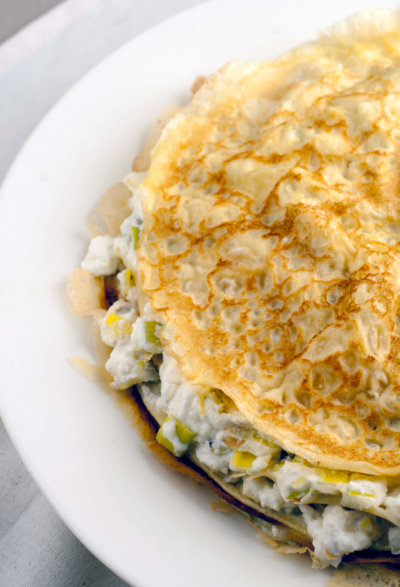
CRÊPES
1 cup (125 g) all-purpose flour
2 eggs
½ cup (120 ml) whole milk
1 cup (240 ml) water
½ teaspoon kosher salt
1 tablespoon unsalted butter, melted, plus extra for greasing
FILLING
1 tablespoon extra-virgin olive oil
2 large leeks (white and light green parts only), diced
1 garlic clove, minced
1 cup (240 g) ricotta cheese
1 cup (150 g) grated feta cheese
½ cup (120 ml) hot water
1 teaspoon kosher salt
In a blender, combine all of the cr.pe ingredients and blend for 10 seconds until smooth. Chill in the refrigerator for 30 minutes.
Meanwhile, make the filling: In a large sauté pan, heat the olive oil over medium heat. Add the leeks and garlic and saut. until softened, 3 to 4 minutes. Remove from the heat and transfer to a mixing bowl. Whisk in the cheeses, hot water, and salt to form a paste. Set aside.
To make the crepes: Heat a nonstick frying pan over medium heat and lightly grease with butter. Pour in just enough batter to cover the bottom of the pan and rotate the pan to form a thin layer of batter across the base. Cook until the batter becomes dry on top and the edges separate from the pan, 2 to 4 minutes. Using a spatula, gently peel away the edges and flip the crêpe over. Cook the other side for an additional 2 to 4 minutes, then transfer to a plate. Re-grease the pan with butter if needed and repeat until all of the batter has been used. You should have 6 to 8 crêpes.
Place a crêpe on a flat serving plate. Smear a large spoonful of filling (about ¼ cup/60 ml) over the surface of the cr.pe, then top with another crêpe. Repeat the layering process until all of the crêpes and filling have been used, making sure you finish with a crêpe.
Slice into wedges and serve.
![]() Chicken Pie (Pileshki Musaka)
Chicken Pie (Pileshki Musaka)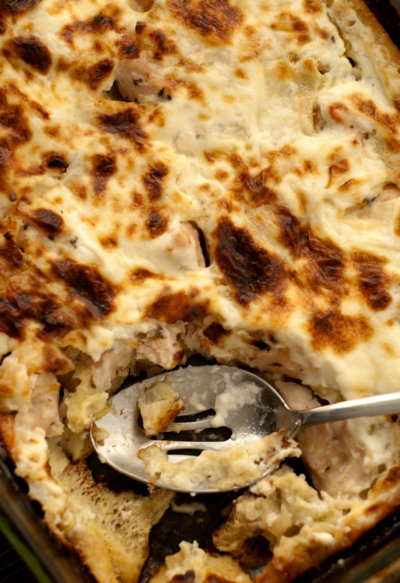
2 lb (900 g) boneless skinless chicken breasts, cut into 1-inch (2.5 cm) cubes
1 teaspoon finely chopped fresh oregano
1 teaspoon finely chopped fresh thyme
2 tablespoons (30 g) unsalted butter
1 medium yellow onion, diced
1 ½ cups (220 g), plus
1 tablespoon all-purpose flour, divided
½ teaspoon freshly ground black pepper
½ cup (125 ml) whole milk
5 eggs, whisked
2 cups (480 ml) sour cream
1 tablespoon extra-virgin olive oil, plus extra for greasing
Kosher salt
Preheat the oven to 375°F (190°C). Grease a 9- by 13-inch (23 by 33 cm) baking dish with olive oil.
In a large bowl, combine the chicken, oregano, thyme, and 1 teaspoon of kosher salt.
In a small saute pan, melt the butter over medium heat. Add the onion and saute for 3 to 4 minutes until tender. Pour the onion and butter into the bowl with the chicken. Toss to coat and set aside.
In a separate bowl, whisk together 1¾ cups (220 g) of the flour, 2 teaspoons of kosher salt, and the black pepper, milk, and eggs until you have a smooth batter.
Pour the batter into the oiled baking dish to create a base. Scatter the chicken and onion mixture over the batter in a single layer.
Bake for 30 minutes until golden brown and cooked through. Remove from the oven and switch the oven to broil.
Mix together the sour cream, olive oil, and 1 tablespoon of the flour. Spoon the sour cream mixture over the chicken and broil for about 5 minutes until the top is golden brown and bubbling.
![]() Yogurt Cake (Jogurt Torta)
Yogurt Cake (Jogurt Torta)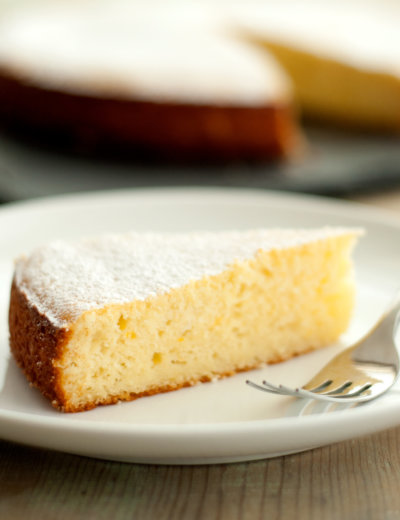
8 tablespoons (113 g) unsalted butter at room temperature, plus extra for greasing
½ cup (100 g) white sugar
2 eggs
1 cup (240 ml) plain full-fat Balkan yogurt (or any plain full-fat yogurt)
1 teaspoon lemon zest
1 teaspoon orange zest
2 cups (250 g) all-purpose flour
2 teaspoons baking powder
½ teaspoon baking soda
½ teaspoon kosher salt
Confectioners’ sugar, for dusting
Preheat the oven to 350°F (180°C). Grease a 9-inch (23 cm) springform cake pan with butter.
Using a stand mixer fitted with the paddle attachment, or a large bowl and a hand mixer, cream the butter and sugar together until fluffy, about 4 minutes. Mix in the eggs, one at a time, until fully incorporated, about 1 minute. Fold in the yogurt and the lemon and orange zests. Set aside.
In a separate large bowl, sift together the flour, baking powder, baking soda, and salt. Carefully fold the dry ingredients into the wet ingredients just until a batter is formed. Be careful not to over-mix.
Pour the batter into the prepared cake pan, smoothing the top with a spatula. Bake for 30 minutes, or until the top is golden brown and a tester inserted into the center comes out clean.
Cool to room temperature. Remove the cake from the pan and dust with confectioners’ sugar before serving.


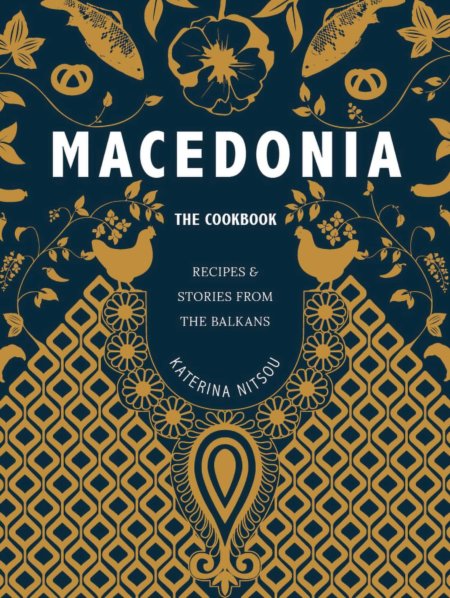


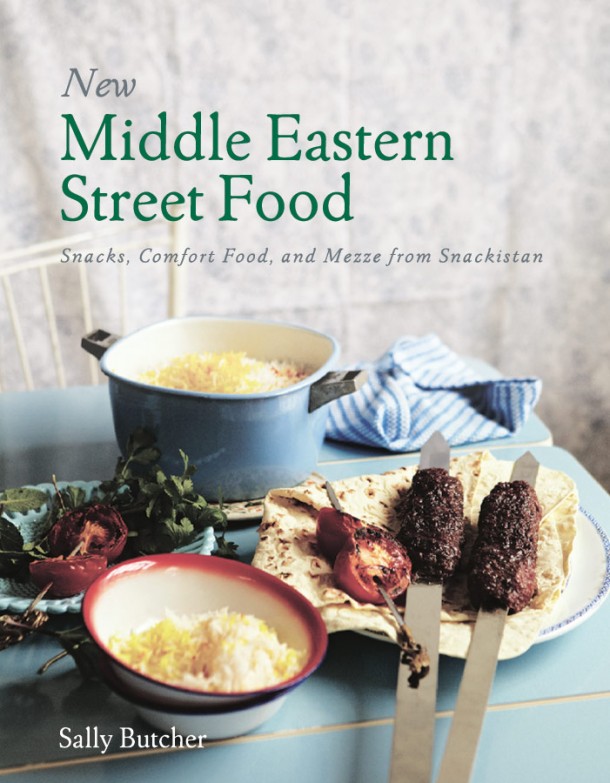
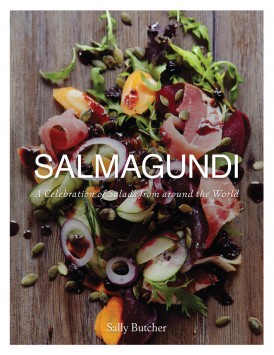
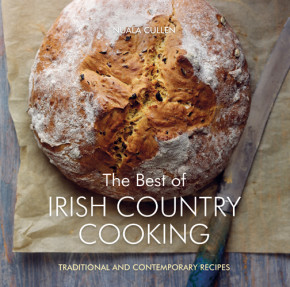
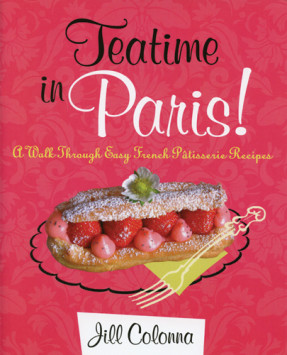

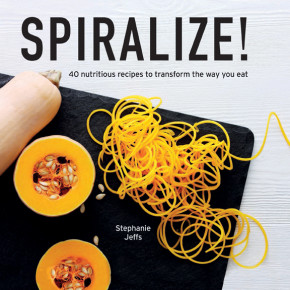
Leave a Reply